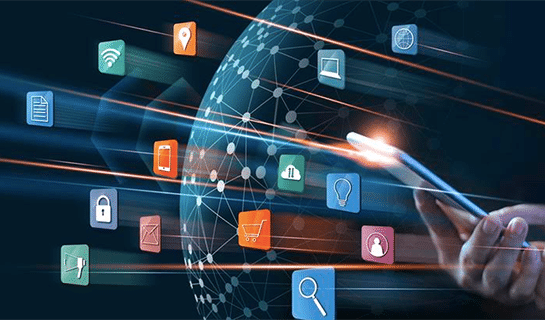What is Omnichannel Customer Service?
Where do you prefer to keep in touch with your customers? If the answer consists of a single channel touchpoint, there’s room for improvement. Successful companies carry customer interactions across multiple touchpoints as part of what we know as omnichannel customer service.
Customers expect seamless interactions with brands and dislike limited communication options. In response, companies are expanding the number of outlets available for their customers—email, chatbots, live assistants, and more. But the real challenge is not acquiring the ability to provide multiple interaction outlets; it makes those multiple communication records available within a single interaction.
What is Omnichannel Customer Service?
Providing omnichannel customer service eliminates the manual tasks support agents go through to aggregate customer communication by integrating varied information sources within a single interface. Acquiring the ability to provide this complex type of customer support helps your organization achieve a better customer experience and grow a loyal customer base. Having quick access to centralized information during support interactions decreases case resolution times and increases quality customer service engagements. With omnichannel solutions providing a comprehensive view of historical account data, support teams can determine weak touchpoints and increase the quality of your customer service engagements.
How Does Technology Enable Omnichannel Customer Service?
AI-powered customer engagement solutions can provide companies with excellent customer service while significantly reducing costs. A solid customer service tool lets you build closer relationships with your customers by combining the power of automated processes with omnichannel communications. Such solutions facilitate customer interactions by:
- Letting companies take a data-driven approach to customer service. Advanced technology lets you leverage the power of data and previous customer interactions to better design workflows and anticipate customer needs.
- Identifying standard use cases that can be automated with the help of process management and intelligent routing. Once companies identify standard use cases, they can create efficient workflows that simplify support representatives’ workload by routing customers to the most efficient support channel to streamline interactions and create a positive customer experience, while allowing customers to benefit from extraordinary support with each interaction.
- Improving team efficiency by eliminating repetitive tasks and nurturing a productive work environment with the help of advanced AI customer support solutions. Such solutions allow companies to anticipate customer needs by designing various call and chat workflows identified by AI with intelligent routing protocols.
- Providing proactive customer care and support, so case resolution timeframes decrease, and friction points between customers and support representatives are eliminated. Being available for customers on multiple channels at the same time (messaging, chat, social, email, or voice) lets companies advance customer care cases in a matter of minutes and enables them to efficiently help customers.
- Supplementing support options by integrating live chat options and global support capabilities to keep up with customers in diverse timezones. Not all customers are located within the same region, so being available around the clock for them is one of the perks offered by intelligent technology adopted within customer support departments.
Starting an Omnichannel Customer Service Strategy
Having guidance in terms of what technology you should implement to design a more cohesive customer service experience matters. But how you implement the available technology also plays a determinant role in implementing an omnichannel customer service strategy’s success. Here are several essential points to consider when designing your strategy:
1. Evaluate Your Current Process
Designing a functional omnichannel customer service strategy should always start by assessing the efficiency of your current process. This includes how well customer service technology is leveraged, case resolution time, and customer feedback.
During your evaluation, collect these metrics to define the success of your current customer service engagements:
- Customer retention rate
- Customer abandonment rates
- Customer effort score
- Customer satisfaction score
- Resolution rates
- Net Promoter Score (NPS)
Each of these metrics defines a specific step within an omnichannel customer service strategy. For example, look at customer abandonment rates. If customers hang up on support reps or exit chat tabs before resolving their issues, the process is most likely inefficient. Customers mainly behave this way because they are frustrated with the help they receive. Understanding the essence of your customer experiences’ begins with understanding each touchpoint within customer service.
2. Understand the Problems within Customer Service Engagements
Before designing and implementing a new omnichannel customer service strategy, understanding the “why” behind the collected organizational metrics above is essential. . Each metric highlights a breakdown in customer service engagement and inhibits true omnichannel customer service. Is the chatbot unresponsive? Is poorly trained support staff the issue? Or would your customers prefer a more independent support solution that allows them to find resolution on their own?
3. Define How Technology Can Improve Internal Processes
Whether your issues reside in improper staff training or the lack of varied support solutions, technology plays a huge role in streamlining processes and achieving omnichannel customer service excellence. We highlighted previously only some of the ways in which technology, especially AI, can help you improve customer support interactions and engagement.
To design on-spot omnichannel customer service strategies and measures, you need to first define how this type of technology and tools will streamline internal processes and make your teams’ work more efficient and effective.
4. Create a Continual Feedback Loop
When implementing new technology to help with customer support, ensure that you create a continuous feedback loop both on your customer’s end and internally. Why? This helps your organization ensure that customer service satisfaction increases and measure employee engagement and satisfaction with the new solutions. In other words, it will help you assess the success of your technology, while offering you the opportunity to constantly apply your customer’s suggestions and improve products and/or services.
At the same time, customer satisfaction levels will increase because they will feel like they matter to your company and you strive to resolve all their pain points.
Omnichannel Customer Service and Customer Experience
Omnichannel customer service is an incremental part of providing the best possible customer experience. In fact, the two are in a perfect balance. Here’s why:
- Offering a diverse range of support solutions enables your customers to communicate their pain points using the method they find the most effective (and comfortable!).
- Omnichannel customer service provides multiple touchpoints where your company can gather KPIs and metrics that can potentially help improve your CX strategy.
- It creates the perfect premises to feed your support reps with the right piece of information at the right time, depending on each customer and historical interactions.
- It creates consistency in customer experience, no matter the support solution customers might choose at different times in their customer journey.
- It allows your company to keep up with your customer’s journey by recording and analyzing all support interactions.
- It lets your company propose new solutions individualized to each of your customers’ evolving needs.
Omnichannel customer service goes hand in hand with customer experience, but it’s only the beginning of building a loyal customer base. Working towards improving and expanding your customer services on multiple channels brings you one step closer to providing the experience you always hoped to offer customers. Curious about how you can leverage technology to boost your high-definition customer experience strategy while cementing an excellent omnichannel customer service plan? Get in touch with us, and we’ll show you how to let the platform do the work and eliminate customer blind spots, roadblocks, and rep busywork!

